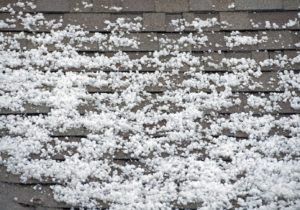Recognizing Common Forms of Roofing Weather Damage

Your roof helps to protect your home from the elements, but your roof can still suffer when Mother Nature throws her full strength at it. As a Maryland homeowner, you know that your house faces a gamut of weather events. From warm summers to snowy winters, this state has it all. Unfortunately, that can also include the occasional severe storm or even hurricane.
All roofing will eventually succumb to the elements and require replacement, but some weather events can hasten that process more than others. Knowing the damage that severe weather can cause can help you to understand when your roof might require repairs. Below, you will find three of the most significant weather threats to your home and how they may impact your roof.
1. Hurricanes
Hurricanes pose a severe hazard to roofs of all types in all conditions. With wind damage, hurricane-force winds push against the side of your home and work their way up over the roof, creating a pressure differential above and below the roofing line. This condition is known as an updraft, and it can place extreme strain on your roofing components.
Although modern roofing designs can resist updraft, every roof is vulnerable if enough force is applied. Poorly installed or maintained shingles will be especially vulnerable to this type of damage. When updraft or uplift occurs, the wind may rip roofing shingles from your decking entirely. If the roof is weak or the wind is strong enough, the decking itself may tear from its supports.
In less severe cases, continuous wind can lift loose or damaged shingles. Wind-driven rain may also find its way into weak points on your roof, ultimately causing water damage to appear in areas that seemed fine during less intense rainstorms. Keeping your roof well-maintained and fixing problems as you discover them is the best way to protect your home from roof damage of this type.
2. Hail
The record for hail size in Maryland is over four inches in diameter, but it takes hail less than half that size to cause severe roof damage. Even walnut- or golf ball-sized chunks of ice can potentially do thousands of dollars of damage to homes. Wind speed can also be a significant factor, with smaller hailstones driven at higher speeds often doing more substantial damage.
Hail strikes can knock asphalt granules loose, crack shingles, or take whole chunks out of your roof. Unlike severe wind damage from a hurricane, damage from a hailstorm may not be immediately apparent. Small cracks or breaks in roof shingles can weaken them without entirely knocking the shingle loose, providing a path for future wind or water damage.
Don’t neglect to inspect your roof thoroughly just because the hailstones seemed to be small. Minor damage can weaken shingles enough to allow future failures. If in doubt, always have a professional roofing contractor check your home following any hailstorm.
3. Ice
Frequent freezing and thawing cycles can create ice barriers along the edge of your roof. These ice dams are the greatest winter roofing threat for many homeowners. Ice along the edge of a roof prevents snow from sliding off, creating a trap for water from snowmelt. Over time, this excess moisture can lead to mold growth or even allow water to find a way under the roof.
If you spot a roof dam on your house, then this may mean that you have a deeper problem with uneven roof heating. These temperature fluctuations can sometimes be the result of inadequate roof ventilation, for example. In addition to clearing the dam, evaluate your roof and address any underlying problems.
Don’t let Mother Nature push your roof around. Ray’s Harford Home Improvement Contractors Inc. can help you to inspect and repair any form of storm damage to your roof. Reach out to us today to receive your roofing repair estimate!

